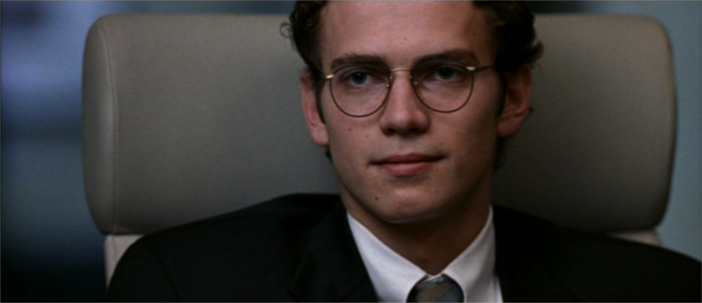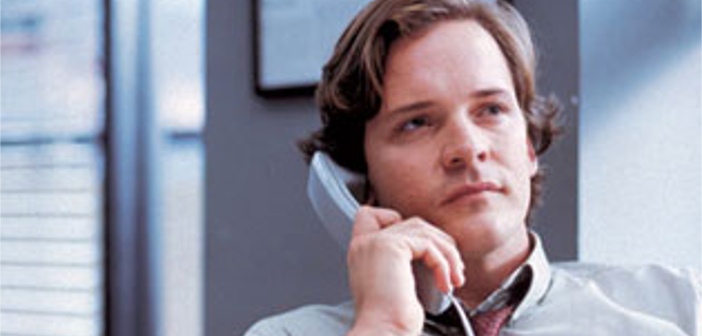Journalism on Film |3| Shattered Glass, Digital Journalism, and the Dark Underbelly of Reportage
HeadStuff is currently publishing a series of weekly articles on how the journalistic process is depicted on film – the intense research involved in the practice, the time it takes to articulate a story, and the false intimacies that come with the interview process. In our first entry, Andrew Carroll writes about the raw humanity in The End of the Tour. In our second, Richard Drumm looks at the failure of objectivity in Capote. In this, the third in our series, Stephen Porzio examines journalism’s dark underbelly in the face of digital change through Shattered Glass.
“They don’t want to hear the whole ‘journalistic responsibility’ speech. You just want to know how to get your name in print, right?”
Often in cinema, journalism is inextricably linked to notions of integrity and honour. From the Watergate-crackers of All the President’s Men to Warren Beatty chasing a sinister organisation in The Parallax View to, most recently, the staff of the Boston Globe exposing the Catholic Church’s lies in Spotlight. The protagonists of these films are heroes. It’s partly due to this that 2001’s Shattered Glass is so intriguing – its true story proving a subversion of the idea that reporters are inherently moral.
Set in 1998, the drama focuses on Stephen Glass (Hayden Christensen), an ambitious young reporter working for the New Republic – a well-respected magazine, noted for being “the official in-flight magazine for Air Force One”. He is well-liked by his colleagues, as well as his editor, Michael Kelly (Hank Azaria). This is partly due to his shy, nervous nature but also because of his humorous but engaging articles. However, when Glass finds himself working under new boss, Chuck Lane (a terrific Peter Sarsgaard), and his article “Hack Heaven” is investigated by internet bloggers, its uncovered that Stephen’s work throughout his career has been largely to completely fabricated.
The pleasure one derives from a film centering around journalists is a similar one to that of the legal thriller or detective drama. It’s oddly satisfying to watch professionals in a particular field of work encounter and ultimately deal with problems in a decisive manner. It can be fascinating to learn the intricacies of a craft and even oddly hypnotic to witness the mundane trivial tasks that make up their day.

In this respect, Shattered Glass delivers in spades. The winning plot device of structuring the events of the narrative around a talk to high-schoolers given by Glass (one which may be only occurring in the anti-hero’s head) enables the film to occasionally take a break from its story in favour of showing the audience what it would be like to work at such a prestigious magazine. Writer-director Billy Ray (who also made the excellent and similarly clinical spy drama Breach) takes time to highlight the agonising aspects of the job – the punishments a journalist receives for “improper use of commas”, the “grueling hours for meagre pay”, stories being pulled last minute for their controversial content and feuds between management and editors.
Writer-director Billy Ray (who also made the excellent and similarly clinical spy drama Breach) takes time to highlight the agonising aspects of the job – the punishments a journalist receives for “improper use of commas”, the “grueling hours for meagre pay”, stories being pulled last minute for their controversial content and feuds between management and editors.
There is also a focus on the personal lives and relationships of those who work at such a well-respected magazine. One cracking scene sees Melanie Lynskey’s Amy trying to push herself – upon seeing Glass’ success – from being pigeonholed as someone who only writes about dry topics like “ethanol subsidies”. Her efforts lead to her being told in a painfully awkward scene that she “doesn’t write funny” from her colleague Caitlin (Chloe Sevigny). Other moments highlight the importance of an editor. As Glass relates to his class full of students:
“There are good editors, there are bad editors, you’ll have both. My hope for you though is at least once you get a truly great editor. A great editor defends his writers against anyone, he stands up and fights for you.”
[arve url=”https://www.youtube.com/watch?v=LTeK1v6Qx_I” maxwidth=”750"]
Ray conveys the editor/writer relationship as something akin to a footballer and their manager. Up until Michael Kelly is fired, the atmosphere at the New Republic is positive. However, once he is replaced by Chuck Lane – someone previously only a staff writer working under Kelly – the mood turns toxic. Before even given a chance to prove himself, the knives are out – leading many to take Glass’s side over Lane’s as allegations stack up against the reporter.
However, the most important information one learns about journalism in the film is the editing process – “a three-day torture test”.
Stephen Glass describes it as thus: “A story comes in and it goes to a senior editor. He or she edits it on her computer and calls in the writer who makes revisions. Then the piece goes to a second editor and the writer revises it again. Then it goes through a fact check where every fact in the piece, every date, every title, every place or assertion is checked and verified. Then it goes to a copy editor where its scrutinised once again. Then it goes to lawyers who apply their own burdens of proof. Marty [o[owner of magazine]m> looks at it too. He’s very concerned by any type of comment the magazine is making. Then production takes it and lays it out in a column. Then it goes back in paper, back to the writer, back to the copy-editor, back to editor number one and editor number two, back to the fact-checker, back to the writer and back to production again. Throughout those lawyers are re-reading and re-reading, looking for red-flags.”
It’s in this process that Glass found a crack, something he exploited for all its worth: “there is a hole in the fact checking system”. Facts must be checked against some type of source material. However, pre-internet, often the only source material was the journalist’s notes. Ergo, if one wrote with enough detail and the story couldn’t be verified in any other way, it would pass the magazine’s fact checking system.

Following this revelation, Shattered Glass mutates into a different beast. It becomes less a movie about journalism and more a gripping thriller about someone attempting not to be caught up in a lie, lying more and more to cover up their original one. It’s fascinating to watch the tables turn in the relationship between Glass and Lane, the former changing from cocky to pathetic, the latter switching from a quiet, humourless editor – one mocked by his underlings – into one that screams with righteous fury, an anger that eventually earns respect from his staff.
Also, inherently interesting about Glass’ story is how it took place at a huge moment in journalism – the digital age. The only reason Stephen’s lies were detected was thanks to the internet. A group of digital reporters (played by Steve Zahn and Rosario Dawson) working for Forbes Digital Tool had the tech skills the staff of the New Republic didn’t – the ability to search tax records and business legislation online not only efficiently but easily. When the Forbes article was published, it was “hailed as a breakthrough for Internet journalism”. It proved the medium was equal in certain respects to the prestige of print.
Glass’ story is endlessly fascinating (have I mentioned that not long after these events he wrote a novel entitled The Fabulist about a reporter who makes up stories?) Anyone interested in journalism, particularly the history of it or its dark underbelly, I’d urge them to seek out Shattered Glass. It was a story served well by the underrated Billy Ray and his cast of uniformly well-chosen character actors.

